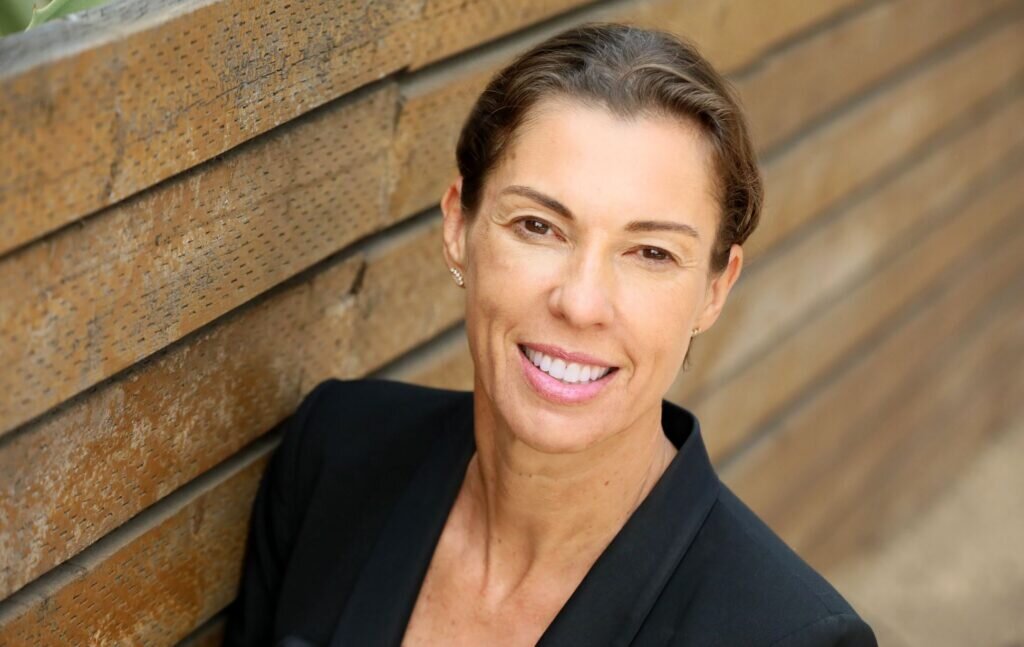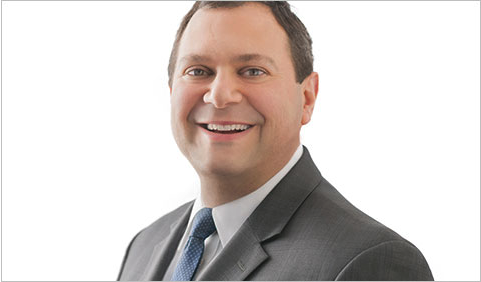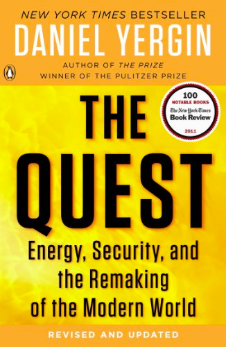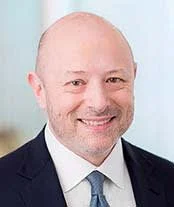😎 Notice of Appearance - Justin Bernbrock, Partner at SheppardMullin😎
This week we welcome Justin Bernbrock, a partner in the Finance and Bankruptcy Practice Group of SheppardMullin out of Chicago, for a discussion about various restructurings he’s been involved in, some thoughts about the future, and some sage counsel for our younger readers. We hope you enjoy it.
PETITION: Welcome and thanks for doing this. Presumably you have a bit more time on your hands to do it because things have obviously been relatively quiet, lol. What has been keeping you busy? What are SheppardMullin clients calling about? And what is your prognosis for 1H22? What is the catalyst, if any, that creates a more robust restructuring market in the near-term? And what industry are you watching that maybe isn’t getting as much attention as it should?
Justin: Thank you very much for having me; I’m a huge fan of PETITION, and I truly appreciate your inviting me into the Borg. Yes, it’s been very quiet on the restructuring front. But, thus far, I’ve been successful at fending off extreme panic — you know, “this too shall pass” and all.
We are fortunate, as a practice group and as a firm, to have partners and colleagues in several different disciplines, many of which aren’t as slow as the complex restructuring market. We also have important mandates in the middle market, particularly on the West Coast, that enable us to continue developing talent and honing our skills.
As for 1H22, I don’t expect there to be a huge upswing in restructuring activity, but I do expect there to be an increase relative to 2H21. That said, I subscribe to the view that modern macroeconomics are far more exposed to dynamic changes than they have been in the past. For example, if Mr. Putin decides to invade Ukraine (after the Olympic Games, of course), there could easily be economic aftershocks that reverberate throughout Western economies and thus result in significant restructuring activity. Beyond a geopolitical event, we continue to watch for climate-change–based events that could drive restructuring activity. Absent these types of external drivers of restructuring activity, I do expect companies in the low-to-mid market to suffer the initial effects of the Fed’s interest-rate hikes.
There’s no one industry on which I’m especially focused. Much like the mighty P-3C Orion (pictured below), I like to say that we’re an all-weather, all-purpose restructuring shop.
PETITION: Let’s take a look at some things from your professional past. A little over a year ago you filed and represented Alpha Media Holdings LLC, a privately-held radio broadcast and multimedia company, in it and its affiliates’ prearranged chapter 11 bankruptcy cases in the Eastern District of Virginia. The company struggled with the pandemic; its advertising customers were small to mid-size businesses that severely reduced advertising budgets. This looks like it was the quintessential middle market deal with approximately $266.5mm of outstanding funded indebtedness at the time of the filing. Brigade Capital Management of “F*ck Citibank in Revlon” fame provided the DIP to take out the first lien lenders (and subsequently rolled into an exit facility) and the second lien lenders swapped debt for equity in the reorganized company. Structurally subordinated holdco notes were wiped out, meaningfully deleveraging the enterprise. General unsecured creditors were left unimpaired. You were in and out in a few months and effective within half a year. A lot of our “Notices of Appearances” have focused on mega deals. What was of particular interest in this middle-market deal that you think our readers might find educational? And please address the lawsuit against the Small Business Administration relating to PPP funds in bankruptcy. If we recall correctly, Alpha Media was on the frontlines of that issue.
Justin: The key takeaway from the Alpha Media case is don’t sleep on middle-market cases; they often provide opportunities to push the edge of the envelope without the risks attendant in a mega case. To this day, I’m a bit sheepish about the things we were able to achieve in the case: a day-one priming DIP, a full take out of our first lien lender prior to the final DIP hearing, uncontested plan confirmation, and a lawsuit that prompted the SBA to change its interpretation of what it means to be a debtor in bankruptcy (i.e., after our lawsuit, the SBA opined that a post‑confirmation debtor was no longer “in bankruptcy” for purposes of the PPP loan application).
I’d be remiss if I didn’t point out that, shortly after our tussle with the SBA in the Alpha Media case, we sued the SBA on behalf of the debtors in the Sizzler USA Restaurants, Inc. chapter 11 cases to ensure Sizzler obtained its second draw under the PPP. We had the Sizzler debtors in and out of bankruptcy in a little over three months. You’re welcome, America:
PETITION: You represented the Conflicts Committee of the Board of Directors in the Seadrill Partners LLC bankruptcy case. Why was a Conflicts Committee necessary in that case and what does conflicts counsel do? That’s not a subject we’ve focused too much attention on.
Justin: Seadrill Partners LLC was an MLP created by its ultimate parent company, Seadrill Limited. In conjunction with Seadrill I (2017–2018), Seadrill Partners underwent an out-of-court restructuring, whereby its funded debt was decoupled from the broader Seadrill Limited enterprise. Nonetheless, Seadrill Limited continued to operate the Seadrill Partners rigs and vessels, and Seadrill Limited retained a significant equity stake in Seadrill Partners.
In late 2019 and early 2020, a group of lenders to Seadrill Partners asserted several complaints regarding the terms on which Seadrill Limited was providing services to Seadrill Partners. Throughout 2020 the bonds of affection between the two companies were continually strained by these disputes. And our client, the Conflicts Committee of the Board of Directors, was at the center of the relationship between Seadrill Limited (and its stakeholders) and Seadrill Partners (and its stakeholders). Our role, therefore, was to guide the Conflicts Committee as it discharged its fiduciary duties—and, moreover, we added a layer of independence in a situation that was something akin to an unmarked minefield.
PETITION: You have a number of oil and gas restructurings on your resume. There was a period several years ago when it seemed like every restructuring pro was taking up residence in Houston. A lot of debt was eliminated in countless bankruptcies. You were involved in Penn Virginia Corporation, Magnum Hunter Resources Corporation, and Midstates Petroleum Company Inc. Since then, there’s been a bunch of industry consolidation and, seemingly, a lot more discipline in the industry. Still, there are ESG concerns and huge political pushes towards cleaner energy sources, just to name a few macro headwinds. Do you think we’re going to see another wave of oil and gas restructurings in the next several years?
Justin: Yes. There’s no question in my mind that energy transition is real. Over the coming years, I fully expect to see continued pressure and real movement from non-renewable energy sources to renewable ones. That transition will take time, however. I expect first-world countries to transition in a meaningful way to renewable sources over the next 20 to 30 years, whereas it may take longer in developing countries. As a result of this, I expect there to be a period of consolidation among oil and gas companies over the next decade and an increased focus on delivering hydrocarbons to the developing world. This all assumes, of course, that the earth doesn’t evaporate first. #dontlookup
PETITION: You represented Patriot Coal Corporation too. What do you predict for what remains of the coal industry? It sure feels like Peabody Energy Inc. ($BTU), to name one, is doing some sort of balance sheet maneuver every, like, six months.
Justin: Like the oil and gas industry, I expect we’ll see additional consolidation in the coal industry (what’s left of it). And we’ll see more focus on exporting coal mined in the United States and coal-related technology to the developing world.
PETITION: Looking more towards the future, we’ve been spending some time talking about some of the fresher things that are happening these days whether that’s the rise and evolution of DAOs or the growth of “decentralized finance.” We have no idea whether any of this stuff is real or top-of-the-cycle chicanery but we suspect, as we’ve written, that these things will end up converging with bankruptcy processes at some point. What do you think?
Justin: Here’s how I want to answer this question:
“There are very few things that I will defend with true passion: medical marijuana, the biblical Satan as a metaphor for rebellion against tyranny, and motherfu**ing Goddamn cryptocurrency.” — Bertram Gilfoyle, Silicon Valley
Alas, I’m not as cool as Gilfoyle. In reality, I’m very torn over the subject. I’m fascinated by block-chain technology and cryptology, I’m personally invested in a few “decentralized finance” products, and I generally favor things that run counter to the status quo (#RiotFest 2022). That said, if taken to its farthest reaches, decentralization could have incredibly destabilizing effects on our current societal structure. Huge swaths of the financial sector—on which much of the modern U.S. economy is based—would be rendered irrelevant. There’d be no need for central banks, and the value of fiat currencies would plummet. The parade of horribles could continue ad infinitum.
I do think we’ll see additional intersection between decentralized finance entities and the bankruptcy process; Mt. Gox is a clear example of this. Nonetheless, I think this intersection will also give rise to complex challenges—i.e., using a centralized system to administer intangible assets, the values of which are subject to wide–ranging differences. Nevertheless, I think it’s wise for restructuring professionals to get smart on these topics now. Again, to quote Guilfoyle:
“Let’s say Buffet is right. Bitcoin dies. So what? Myspace and Friendster both died but they paved the way for other social media like Facebook and Twitter to completely overrun the planet. Crypto is out there and it’s not going away.” Bertram Gilfoyle, Silicon Valley
PETITION: What is your favorite thing about the bankruptcy code? On the flip side, you must have some thoughts about inefficiencies in bankruptcy. What is f*cked and needs fixing? Is there one subject that not enough people are talking about? If you could implore Congress to take action about one thing, what would it be?
Justin: My favorite thing about the Bankruptcy Code is that it works! I don’t think it’s a stretch to say that the U.S. insolvency regime, writ large, is the envy of the world. And it’s played a major role in the U.S. economy by acting as a value recycling system.
As for inefficiencies, and this is a statement against interest, I’ve long thought that the practice of preparing and filing voluminous first–day pleadings is a waste. Save for a few critical documents in which a narrative story is important, I think a majority of the relief sought by FDMs could be achieved via check-the-box forms.
PETITION: You and some of your colleagues have gotten into the podcasting game. That’s something we’ve always wanted to do but … well … we have some obvious constraints (😉 ). One day, maybe. That said, why does the world need another restructuring podcast and what do you and the team hope to get out of it? Is this … not to be cynical here … just another indication that things in the market are slow (akin to what we’d dubbed the “Weil Bankruptcy Blog Index”)?
Justin: We could absolutely use the Stephen Hawking voice—without all the clever stuff (hat tip to R. Gervais)—if you’re worried about maintaining anonymity.
In truth, the idea for Restructure This! came while I was riding Metra into Chicago (pre pandemic, of course), and I couldn’t find a recurring podcast from the perspective of a restructuring lawyer. And, candidly, it’s something that I pitched to Sheppard Mullin when I was first interviewing. It’s taken a bit longer than I’d hoped to actually launch, but I’m very proud of what we’ve put out thus far. And, yes, we’ve had time to focus on the project because the market has been quiet—the challenge, I think, will be to keep it going once restructuring activity picks up.
PETITION: What is the best piece of professional advice that you’ve ever gotten and why? Any lessons you apply to your career from your experience in the military?
Justin: To quote one of my mentors, “care about your job” and “DFIU,” which stands for…well, you get it. At the crux of these is the idea of doing good work, which I think is essential to having longevity in this business. Indeed, performance has to be the bedrock of any successful career—no gimmick or social–status relationship is going fill the void left by not doing the work or not doing it well.
My military background is central to who I am; it’s difficult to reduce that experience to a series of transferable, discrete lessons. For example, I’ve not needed to field strip a Sig Sauer P320 in my time as a restructuring lawyer, nor have I needed to fold an entire compliment of uniforms so they could fit into a seabag. But, owing to my time in the military, I have a keen sense of attention to detail—and that’s something that has served me very well in my current capacity. I also think my military background provides a perspective that’s somewhat uncommon in my line of work.
PETITION: What are some books that have helped you in your career?
Justin: Here’s a list of books that come to mind:
PETITION: Finally, you’ve likely noticed that we like to snark “Long ABC” or “Short XYZ.” What are you “long” these days? What are you “short”? Feel free to be creative here but please list one thing that’s legal/financial and one thing that’s … well … whatever.
Justin: I’m long on post-pandemic, work-life dynamics. Our youngest daughter, Madalynn Grace, was born on April 20, 2020, and I’ve been able to observe and participate in her development far more because I’ve been home for most of her life. Time will tell whether she’s long or short on “Dada time.”
Of course, I think it’s important to spend meaningful, in-person time with clients and colleagues, but I suspect the future of these interactions will be more intentional and efficient. And I think that firms and companies will continue to evaluate policies and practices with an increased focus on human health and well-being.
I’m short on non-consensual (or quasi-consensual) third–party–release provisions in Chapter 11 plans. Purdue Pharma and Ascena are the latest flash points in a cold war that’s been lurking for some time. And I expect that Bankruptcy Courts across the country will more closely scrutinize all release and exculpation provisions in the wake of these decisions. To be sure, the United States Trustee Program will take up the standard (to the extent it hasn’t done so already) in the hopes of further eroding the practice of seeking/receiving broad releases under Chapter 11 plans. The harder question, I think, is whether it would be more beneficial for the canon of release law to develop in the Courts of Appeal (and, perhaps, SCOTUS) before a Congressional solution is fashioned.
PETITION: Thanks Justin.














